
活動レポート


- 新たな世界を作る教育の価値 -
![]()
![]()
![]()
![]()
![]()
![]()
![]()
![]()
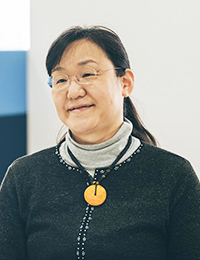
帝京大学教育学部初等教育学科 教授 中山京子
公立小学校と、国立大学附属小学校の教諭を経て、2005年京都ノートルダム女子大学専任講師を務める。2010年帝京大学の准教授に就任、博士学位を取得。以後、教育学部初等教育学科において、教育活動の傍ら、国際理解教育・多文化教育・社会科教育を専門に研究活動を継続している。
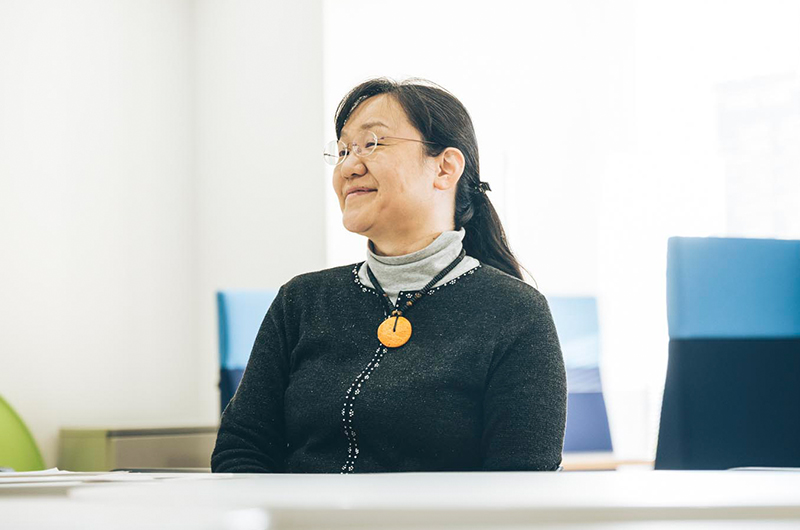
ゼミでは、国際理解教育を中心とした関連領域について、文献精読やワークショップを通して基礎的なことを学んでいます。最近は国際理解教育とかかわりが強いSDGsも学びの範疇です。さらに応用的・実践的に学びを深めたい有志が集まり、課外活動として国際交流活動に取り組んでいます。中でもグアムの歴史や文化に関心をもち、体験から得た気づきをどのように活用し教育的な価値へ落とし込むのかをテーマのひとつとしてきました。グアムは著名なリゾート地のひとつで、アメリカ未編入領土として自治政府があります。しかしながらその歴史は複雑です。もともとグアム島には先住民族チャモロが住んでいました。1500年代の大航海時代にスペインに占領され、以後300年以上支配下に置かれます。1800年代末にスペインとアメリカ間に戦争があり、以後アメリカ領土となりますが、第二次世界大戦においては日本が占領し大宮島(おおみやじま)とします。その後アメリカが奪還し現在に至ります。
ゼミでは国際交流活動の一環として、グアムからの生徒を受け入れ、ホストも務めます。彼らの中には洗車をしてお金を貯めてやってくる子もいます。移民家庭の都合上パスポートがとれない、スクールバス以外の公共交通機関に乗ったことがない、そういうグアムの生徒たちもキャンパスに来て、学生が彼らとともに過ごします。帝京大学の学生たちは、交流を通してグアムの若者が置かれている状況や島のインフラ状況を垣間見て、世界の現実を実感するようになります。同時に、グアムの子たちが日本の今に触れることにも大きな意味があります。グアムからの引率者は、島の外の環境や日本の「大学」という場を見せて視野を広げることを願うのです。このプロセス後、学生がグアムに行くと現地の生活を真剣に見つめるようになります。東京での生活水準から離れ、わずかな食パンとハムを分かち合い、現地の家庭で心豊かな食事をふるまっていただく経験から、深く考える学生が生まれます。
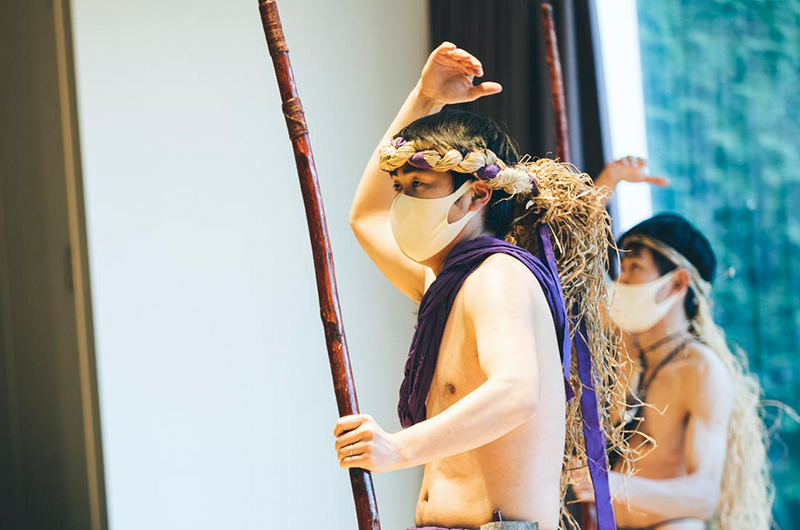
2013年、チャモロダンスのマスターであるラボン氏の帝京大学来学を機に、有志学生とGuma' Famagu'on Tano' yan i Tasi=「グマ ファマグウン タノ ザニ タシ、大地と海の子どもたちの意」(以下GFTYT)というグループを立ち上げました。チャモロダンスとは、チャモロの神話や民話、現代の人々の想いをダンスで表現したものです。学生は先住民文化の象徴であるダンスを通し歴史や考えを学びます。スペイン統治時代が長いためスペイン風の衣装も用いること。文化やルーツを「見える化」するために古い踊りは原初的な格好であること。街に行けば日本に侵略され文化的に上塗りされた建築物があること。そのすべてをひっくるめて、私たちが学ぶべき“責任”があることを理解します。
とはいえ、日本では活動そのものが奇異の目でみられることもしばしばあります。他国の、しかも日本人にとって聞きなれない民族のダンスを真剣に踊っている姿をみて「変わった人たち」と思われることもあります。実はそうした立場に置かれることも重要な教育環境です。要は、社会のマイノリティであることを学生たち自身で経験することだからです。日本で生活する学生たちの大半は、”マイノリティ”であることを実感することがありません。しかし、いざその立場になった時、芯をもち、文化を語れる人になっていけるかどうかが彼らの挑戦なのです。
彼らはチャモロダンスを通して、先進国のこと、途上国のこと、日本のこと、自分たちのことについて深く考え、学ぶようになる。この活動は人間教育そのもの。自分たちは飛行機で行って、車でグアムを走り回って、グアムの環境を消費する立場の人間であるということに学生が気づくようになる。そしてその学生が教員になっていく。まさにこれが「責任の教育」の一つの姿なのではないかと考えています。
9年前に入学し7年前に私のゼミに来た学生がいました。5年前に大学を卒業し、現在は帝京大学小学校で教諭をしている遠藤さんです。学生時代にはグループの要のメンバーでもあり、私とぶつかったこともありました。2020年半ば、遠藤さんから、2020年末から2021年の始めに行われる「探求」という時間でチャモロダンスを取り上げ、学年全体で取り組みたいという打診がありました。遠藤さんからさまざまな話を聞いた同僚の中野さんも担当する「探求」のテーマとして扱う価値があると考え、2人がアプローチしてきてくれたのです。
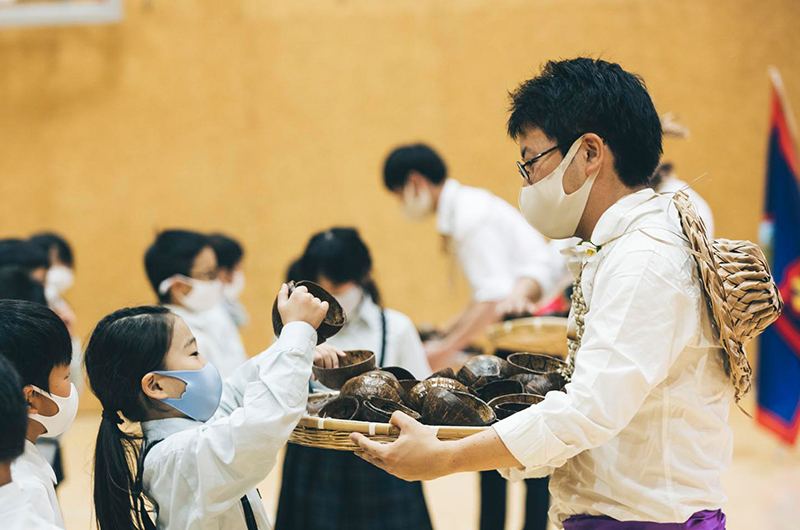
こうして帝京大学小学校×GFTYT協働プロジェクトとして、グアム文化体験学習「チャモロってなぁに?」がスタートすることになりました。小学校3年生を対象に、各2時間ずつ3回の学習活動と学習発表会によって構成されています。第1回目は私たちがチャモロダンスを披露し、生徒たちと一緒に踊りながら、グアムの文化に出会います。2回目以降では、グアム文化について文化、言語、身につけるもの、ダンス、音楽の5つのテーマごとにグループに分かれて異文化を探究していきます。最後に学習発表会をします。GFTYTの大学生が子どもの学びをサポートし、子どもの学びと大学生の活動を、遠藤さんと同期卒業生で元ゼミ長の東さん(公立小学校教諭、現在もチャモロ語を学び中)も合流し、サポートします。チャモロダンスを通して得た学びを伝える場として、これ以上の機会はありません。まさに「責任の教育」が実行される場です。小学生の柔軟な心の中に、新しい教育がつながっていく。ゼミ生たちは自らが教育者になる機会を得たのです。
教育学部には、子どもとかかわることに興味を抱く学生がたくさんいます。その彼らが、真の教育者になるために行動することは、間違いなくSDGs的なアクションに合致します。SDGsはMDGsから数えてはや20年。すでに啓蒙段階は終え行動段階になければならない。しかし、日本社会はなかなかそこまで至っていないようにも見えます。だからこそ教育の現場では行動し続ける必要があると考えています。今回の探究活動では、教員が学年教員や専科教員を巻き込み、子どものことを考えながらみんなで参加してメニューを考えている。これこそが協働の姿であり、SDGs的行動そのものです。
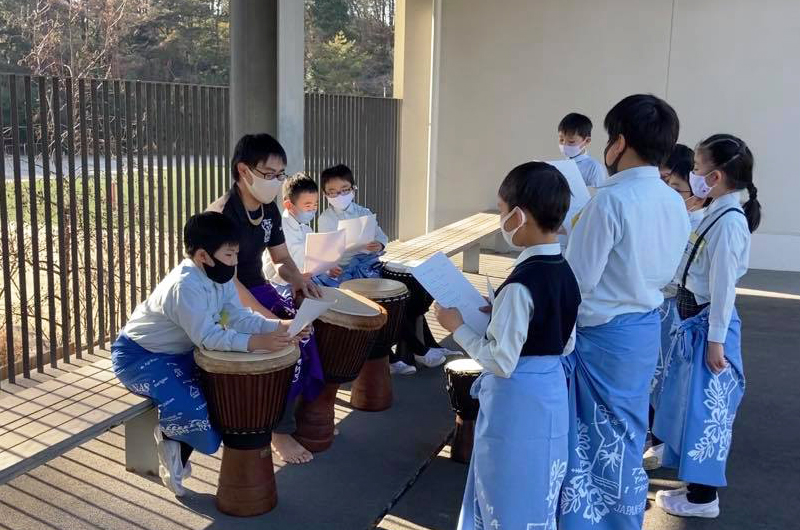
帝京大学教育学部が恵まれているのは、すぐそばに系列の小学校があることです。実際に学ぶ子どもたちと触れ合うことができ、教育者として活躍する教諭たちのリアルな姿を知ることができる。そして、教育学部を巣立つ卒業生の多くはさまざまな教育の現場に行きます。この、人のつながりが”教育”を伝え合っていくわけです。すでに遠藤さんや東さんたちが示してくれたように、チャモロ文化を理解するという経験から得たものを、教育の現場で行動に移していくという実践がここにはあります。もちろん簡単ではありません。テーマも軽いものではありません。受け取る側の意識もすぐには育ってくれない。時間がかかることでもあります。しかし、SDGs自体はすぐに解決できるものでしょうか。果たして本当に、先進国に生きるわれわれが正しく理解できているのか。最適解の方法を選択できているのか。世界は果たして間に合うのか。一つひとつの効果が目に見えるようになるには時間がかかります。責任を教育するということは、これまでに蓄積された歴史の意味を多元的に理解することであり、得られた教訓を未来の行動に変えるきっかけづくりでもあります。グアムを通して学生たちが得る大きな学びの中には、SDGsにおいて教育が果たすべきエッセンスが確かに散りばめられているのです。